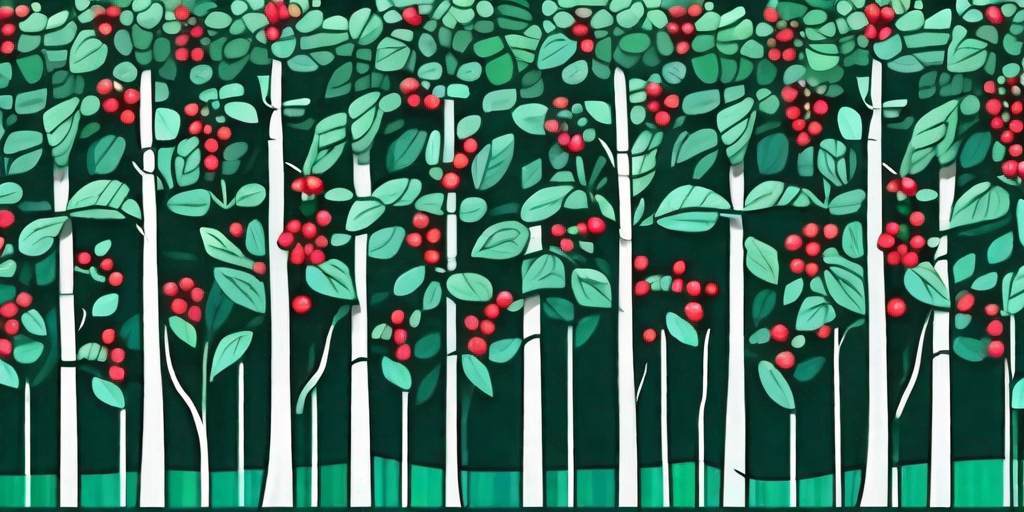
Ah, the Cotoneaster hedge. A lovely, versatile plant that can transform any garden into a lush, green paradise. But how does one go about creating the perfect Cotoneaster hedge? Well, dear reader, you're about to find out.
Understanding the Cotoneaster Hedge
Before we dive into the nitty-gritty of hedge creation, let's take a moment to appreciate the Cotoneaster hedge. This plant isn't just a pretty face. It's a hardy, resilient species that can withstand harsh weather conditions and poor soil quality. Plus, it's a magnet for wildlife, attracting a variety of birds and insects. So, not only will you have a beautiful hedge, but you'll also be doing your bit for the environment. How's that for a win-win?
There are several types of Cotoneaster, each with its own unique characteristics. The Cotoneaster horizontalis, for instance, is known for its herringbone pattern and vibrant red berries. The Cotoneaster lacteus, on the other hand, boasts glossy leaves and clusters of white flowers. So, before you start planting, take some time to research and decide which type is best suited to your garden and personal taste.
Creating Your Cotoneaster Hedge
Now, let's get down to business. Creating a Cotoneaster hedge might seem daunting, but with a bit of patience and the right know-how, you'll have a hedge that's the envy of your neighbours in no time.
Choosing the Right Spot
First things first, you need to find the perfect spot for your hedge. Cotoneasters are pretty flexible and can grow in both full sun and partial shade. However, they do prefer well-drained soil. So, if your garden is prone to waterlogging, you might want to think about improving your soil's drainage before you start planting.
Also, consider the size of your hedge. Cotoneasters can grow quite large, so make sure you have enough space. And remember, the bigger the hedge, the more maintenance it will require. So, if you're not a fan of pruning, you might want to keep your hedge on the smaller side.
Planting Your Hedge
Once you've found the perfect spot, it's time to start planting. The best time to plant a Cotoneaster hedge is in the autumn or spring when the soil is moist and the weather is mild. This gives the plants plenty of time to establish their roots before the harsh winter or hot summer weather sets in.
When planting, make sure to space your plants about 1 metre apart. This will give them enough room to grow and spread out. And don't forget to water your plants thoroughly after planting. This will help them settle in and start growing.
Maintaining Your Cotoneaster Hedge
Now that you've planted your hedge, it's time to think about maintenance. Don't worry, Cotoneasters are pretty low-maintenance plants. But there are a few things you can do to keep your hedge looking its best.
Pruning
Pruning is an essential part of hedge maintenance. It helps keep your hedge neat and tidy, and encourages healthy growth. The best time to prune a Cotoneaster hedge is in late winter or early spring, before the new growth starts. Just be careful not to over-prune, as this can damage the plant and stunt its growth.
When pruning, aim to maintain the natural shape of the hedge. Cotoneasters have a lovely, flowing shape that can be ruined by overzealous pruning. So, take your time and prune with care.
Feeding
While Cotoneasters aren't particularly fussy eaters, they do appreciate a bit of extra nutrition now and then. A slow-release fertiliser applied in the spring can help boost growth and keep your hedge looking lush and healthy. Just be sure to follow the instructions on the fertiliser packet to avoid over-feeding.
Common Questions About Cotoneaster Hedges
Still have questions about Cotoneaster hedges? Don't worry, you're not alone. Here are some of the most common questions people have about these lovely plants.
Are Cotoneaster Hedges Evergreen?
Yes, most Cotoneaster species are evergreen, meaning they keep their leaves all year round. This makes them a great choice for adding colour and interest to your garden during the colder months.
Are Cotoneaster Hedges Fast Growing?
Yes, Cotoneaster hedges are relatively fast-growing. Most species can grow up to 30cm per year. So, if you're looking for a hedge that will quickly provide privacy and coverage, a Cotoneaster hedge could be the perfect choice.
Are Cotoneaster Hedges Suitable for Small Gardens?
Yes, Cotoneaster hedges can be suitable for small gardens, as long as they are pruned regularly to keep them in check. However, if you're really short on space, you might want to consider a smaller species, like the Cotoneaster microphyllus, which only grows to about 1 metre in height.
Conclusion
Creating the perfect Cotoneaster hedge might seem like a daunting task, but with a bit of patience and the right know-how, it's perfectly achievable. So, why not give it a go? With its lush foliage, vibrant berries and wildlife-attracting properties, a Cotoneaster hedge could be the perfect addition to your garden.
And remember, gardening is supposed to be fun. So, don't stress if things don't go perfectly the first time. Just keep trying, keep learning, and most importantly, keep enjoying your garden. Happy planting!















